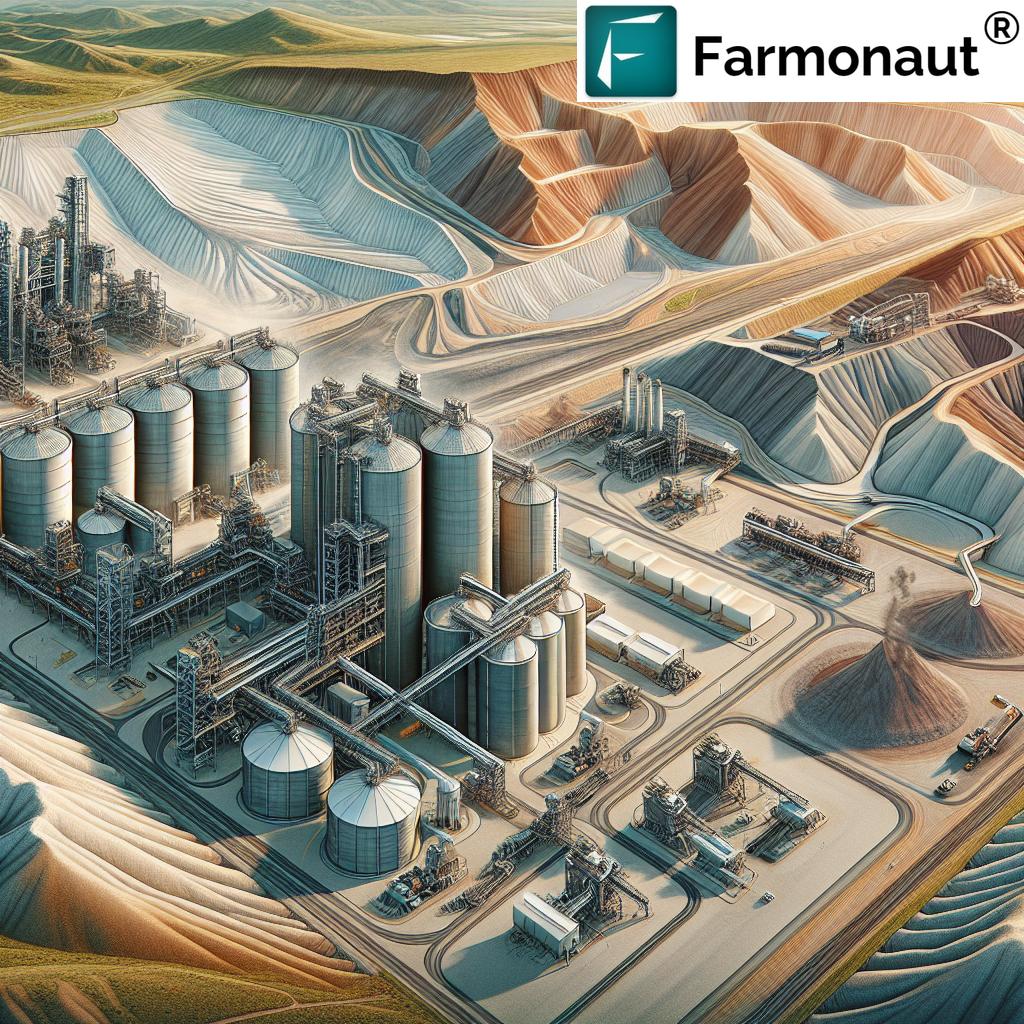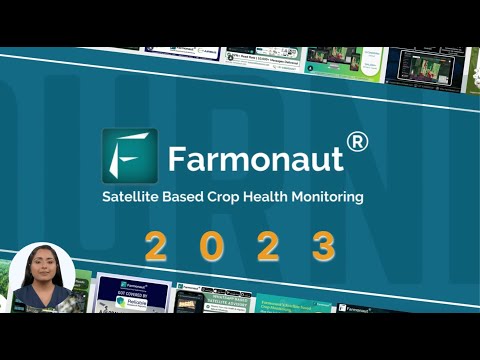Unlocking Growth: Idaho’s Phosphate Fertilizer Production Capacity Expands with Strategic Investments
“Idaho’s phosphate fertilizer production capacity is expanding, with new investments in superphosphoric acid and ammonium polyphosphate manufacturing.”
“Global phosphate fertilizer market growth is driven by high-grade mining projects and increased sulfuric acid production capacity in strategic locations.”
In the ever-evolving landscape of the specialty fertilizer industry, we are witnessing a remarkable transformation in phosphate fertilizer production and capacity. As leaders in this sector, we at Itafos Inc. are excited to share the latest developments that are shaping the future of agriculture and horticulture. Our vertically integrated phosphate business is at the forefront of these advancements, with significant expansions in production capabilities for various fertilizer types.
In this comprehensive blog post, we’ll delve into the intricate world of phosphate fertilizer production, exploring everything from superphosphoric acid manufacturing to ammonium polyphosphate production. We’ll shine a spotlight on the industry’s current landscape, with a particular focus on our strategic investments in Idaho, US, and our operations in Brazil.
The Vertically Integrated Phosphate Business: A Closer Look
Our vertically integrated phosphate business in Idaho, US, known as Conda, stands as a testament to our commitment to innovation and efficiency in fertilizer production. With a production capacity of approximately 550,000 tonnes per year, Conda is a powerhouse in the manufacturing of various phosphate-based products:
- Monoammonium Phosphate (MAP)
- MAP with micronutrients (MAP+)
- Superphosphoric Acid (SPA)
- Merchant Grade Phosphoric Acid (MGA)
- Ammonium Polyphosphate (APP)
Additionally, Conda boasts a production capacity of about 27,000 tonnes per year of hydrofluorosilicic acid (HFSA), showcasing our diverse product portfolio.

Superphosphoric Acid Manufacturing: A Key Component
Superphosphoric acid (SPA) is a crucial element in our production line. This highly concentrated form of phosphoric acid is essential for creating high-analysis fertilizers. Our state-of-the-art manufacturing process ensures the highest quality SPA, which serves as a building block for many of our specialty fertilizer products.
The production of SPA involves concentrating phosphoric acid to levels above 70% P2O5, resulting in a product that’s more efficient to transport and use in fertilizer blending. Our investments in SPA manufacturing capacity have significantly boosted our ability to meet the growing demand for high-performance fertilizers.
Ammonium Polyphosphate Production: Meeting Modern Agricultural Needs
Ammonium polyphosphate (APP) is another cornerstone of our product lineup. This versatile fertilizer is known for its high nutrient content and excellent solubility, making it ideal for both foliar applications and fertigation systems. Our APP production facilities are equipped with cutting-edge technology to ensure consistent quality and optimal nutrient ratios.
The expansion of our APP production capacity aligns with the increasing global demand for efficient, water-soluble fertilizers. Farmers and growers worldwide rely on APP for its ability to provide readily available phosphorus and nitrogen, crucial for crop development and yield optimization.
Sulfuric Acid Production Capacity: The Foundation of Phosphate Fertilizers
Sulfuric acid is a fundamental component in phosphate fertilizer production. Our facilities boast significant sulfuric acid production capacity, which forms the backbone of our phosphate fertilizer manufacturing process. In our Arraias operation in Brazil, we have a gross sulfuric acid production capacity of 220,000 tonnes per year, with approximately 40,000 tonnes of excess capacity available for other uses or sale.
This robust sulfuric acid production capability ensures a steady supply for our phosphate processing needs and contributes to our self-sufficiency in key raw materials. It’s a critical factor in maintaining our competitive edge in the global fertilizer market.
High-Grade Phosphate Mining: Securing Quality Raw Materials
The quality of phosphate fertilizers begins with the source material. Our high-grade phosphate mining projects are strategically located to ensure a consistent supply of premium phosphate rock. The Farim project in Guinea-Bissau and the Santana project in Pará, Brazil, are prime examples of our commitment to securing top-tier phosphate resources.
These mining operations not only support our current production needs but also position us for future growth. By controlling the entire value chain from mine to market, we can guarantee the quality and sustainability of our products.

Fertilizer Plant Projects: Expanding Our Footprint
Our growth strategy includes significant investments in new and expanded fertilizer plant projects. These initiatives are designed to increase our production capacity and introduce advanced technologies that enhance efficiency and product quality.
One of our most exciting projects is the development of a vertically integrated high-grade phosphate mine and fertilizer plant in Santana, Brazil. This project exemplifies our commitment to creating state-of-the-art facilities that can meet the evolving needs of the global agricultural sector.
Investment Opportunities in the Phosphate Fertilizer Industry
The phosphate fertilizer industry presents compelling investment opportunities, driven by growing global food demand and the need for increased agricultural productivity. Our recent granting of 773,037 restricted share units (RSUs) to directors and officers underscores the potential for value creation in this sector.
Investors looking to capitalize on the growth of the specialty fertilizer market may find our vertically integrated business model particularly attractive. By controlling all aspects of production, from mining to final product manufacturing, we’re well-positioned to navigate market fluctuations and maintain strong margins.
Global Phosphate Fertilizer Market: A Strategic Overview
The global phosphate fertilizer market is experiencing significant growth, driven by increasing food demand, changing dietary habits, and the need for higher crop yields. Our strategic locations in Idaho, US, and Brazil position us to serve key agricultural markets efficiently.
Let’s take a closer look at the phosphate fertilizer production capacity across different regions:
| Region/Location | Annual Production Capacity (million metric tons) | Primary Fertilizer Types Produced | Key Production Facilities |
|---|---|---|---|
| Idaho, US | 0.55 | MAP, MAP+, SPA, MGA, APP | Conda |
| Tocantins, Brazil | 0.5 | SSP, SSP+ | Arraias |
| Pará, Brazil | TBD | High-grade phosphate | Santana (in development) |
| Guinea-Bissau | TBD | High-grade phosphate rock | Farim (project) |
This table illustrates the diverse production capabilities across our global operations, highlighting our strategic positioning in key phosphate-producing regions.
Incorporating Micronutrients: Enhancing Fertilizer Efficacy
In response to the growing demand for more comprehensive plant nutrition solutions, we’ve expanded our product line to include fertilizers with micronutrients. Our MAP+ and SSP+ products are prime examples of how we’re integrating essential trace elements into our core fertilizer offerings.
These enhanced products provide crops with a balanced nutrient profile, addressing potential micronutrient deficiencies that can limit plant growth and yield. By offering fertilizers with built-in micronutrients, we’re helping farmers improve crop quality and increase their overall productivity.
Single Superphosphate Manufacturing: Meeting Diverse Agricultural Needs
Our Arraias facility in Brazil specializes in the production of single superphosphate (SSP) and SSP with micronutrients (SSP+). With an annual production capacity of approximately 500,000 tonnes, this operation plays a crucial role in serving the South American agricultural market.
SSP is a versatile fertilizer that provides plants with phosphorus, calcium, and sulfur. Its popularity in Brazil and other regions with sulfur-deficient soils makes it an essential component of our product portfolio. The addition of micronutrients in our SSP+ formulation further enhances its value to farmers seeking comprehensive nutritional solutions for their crops.
Future Prospects: Innovations in Phosphate Fertilizer Production
As we look to the future, we’re excited about the potential for further innovations in phosphate fertilizer production. Our research and development teams are continuously exploring new technologies and processes to improve efficiency, reduce environmental impact, and enhance product performance.
Some areas of focus for future development include:
- Advanced granulation techniques for improved nutrient release
- Integration of bio-stimulants and beneficial microorganisms into fertilizer formulations
- Development of slow-release and controlled-release phosphate fertilizers
- Exploration of alternative phosphate sources and recycling technologies
These innovations will help us stay at the forefront of the specialty fertilizer industry, meeting the evolving needs of farmers and contributing to global food security.
Conclusion: Powering Agricultural Growth Through Strategic Investments
The expansion of phosphate fertilizer production capacity, particularly in Idaho and other strategic locations, represents a significant milestone in the growth of the specialty fertilizer industry. Our vertically integrated approach, from high-grade phosphate mining to the production of advanced fertilizer formulations, positions us to meet the increasing global demand for efficient and effective plant nutrition solutions.
As we continue to invest in our production facilities, research new technologies, and explore opportunities for growth, we remain committed to our mission of supporting sustainable agriculture and ensuring food security for future generations. The phosphate fertilizer industry is poised for continued growth and innovation, and we’re proud to be at the forefront of these exciting developments.
FAQs: Phosphate Fertilizer Production and Industry Trends
- What is the primary advantage of vertically integrated phosphate businesses?
Vertical integration allows for greater control over the entire production process, from mining to final product manufacturing, ensuring consistent quality and cost efficiency. - How does superphosphoric acid differ from regular phosphoric acid?
Superphosphoric acid has a higher concentration of P2O5 (typically above 70%) compared to regular phosphoric acid, making it more efficient for transportation and use in high-analysis fertilizers. - Why is ammonium polyphosphate becoming increasingly popular in agriculture?
Ammonium polyphosphate is highly soluble and provides readily available phosphorus and nitrogen, making it ideal for modern irrigation systems and foliar applications. - What role does sulfuric acid play in phosphate fertilizer production?
Sulfuric acid is a key component in the process of converting phosphate rock into usable phosphoric acid, which is then used to produce various phosphate fertilizers. - How do micronutrients enhance the efficacy of phosphate fertilizers?
Micronutrients address potential trace element deficiencies in crops, complementing the primary nutrients provided by phosphate fertilizers and promoting overall plant health and yield.
For those interested in leveraging advanced agricultural technologies to optimize their farming operations, we recommend exploring Farmonaut’s crop plantation and forest advisory services. These services provide valuable insights for efficient resource management and improved crop yields, complementing the benefits of our phosphate fertilizers.
Additionally, for large-scale agricultural operations looking to enhance their management capabilities, Farmonaut’s large-scale farm management solutions offer comprehensive tools for monitoring and optimizing farm performance across extensive areas.
Subscription Options for Agricultural Insights
Earn With Farmonaut: Affiliate Program
Earn 20% recurring commission with Farmonaut’s affiliate program by sharing your promo code and helping farmers save 10%. Onboard 10 Elite farmers monthly to earn a minimum of $148,000 annually—start now and grow your income!
For more information on our products and services, or to join our mailing list, please visit www.itafos.com.
Explore our API and API Developer Docs for integrating agricultural insights into your applications.







